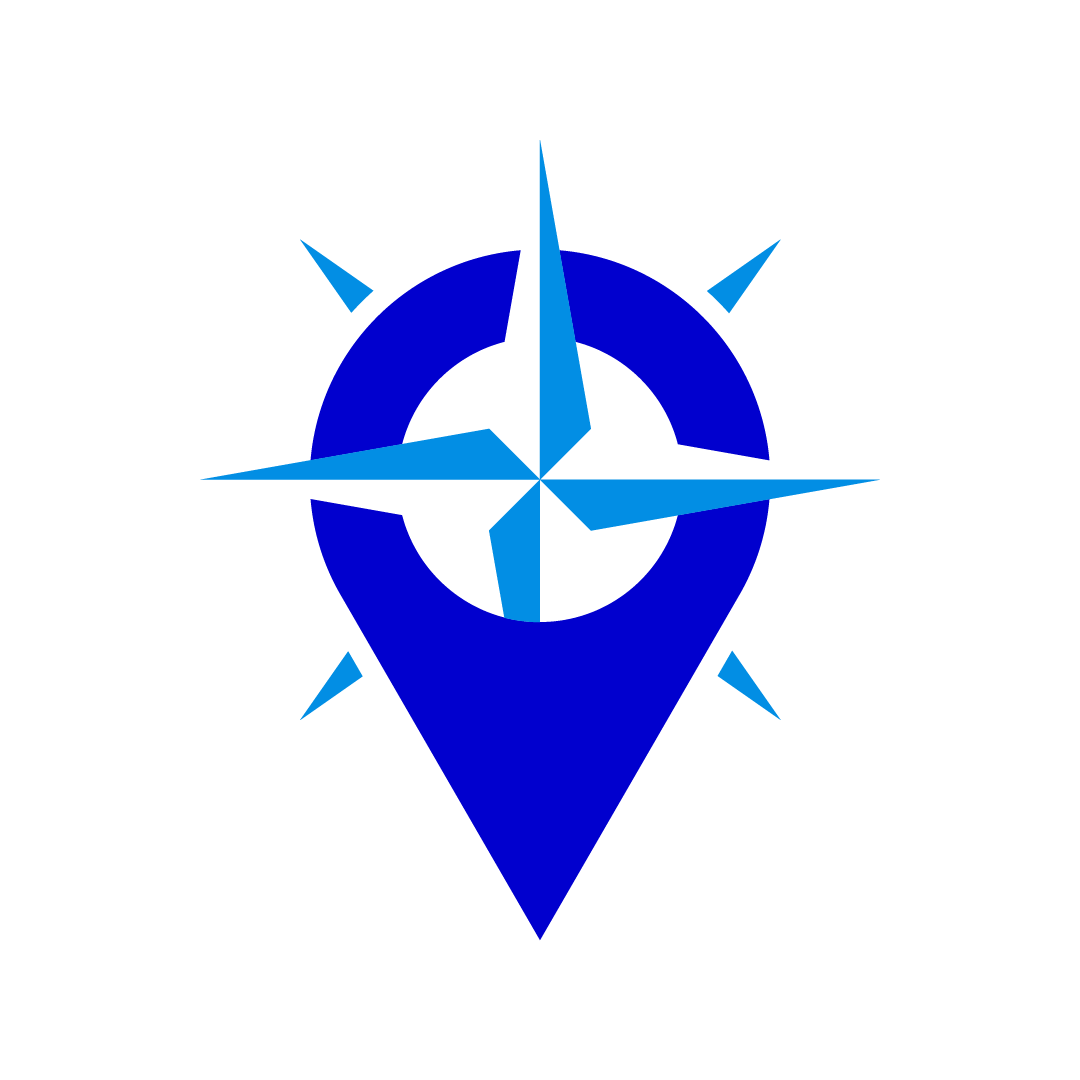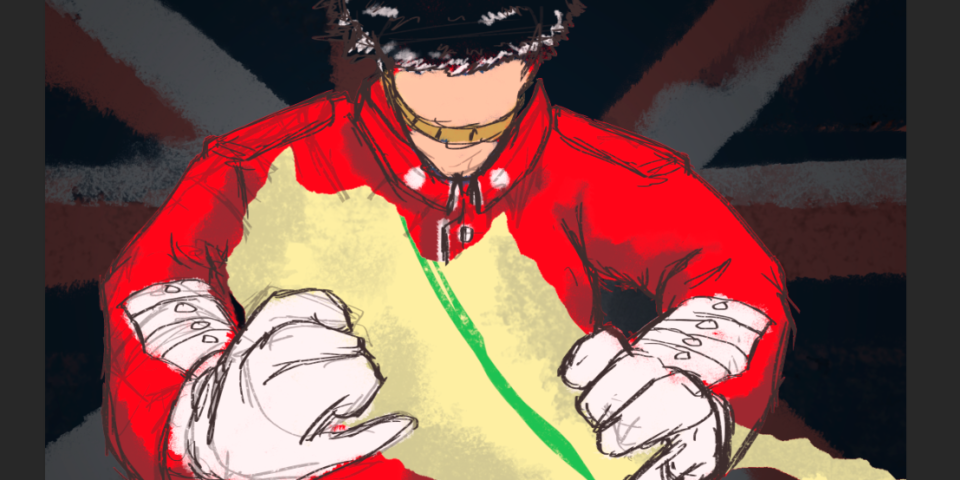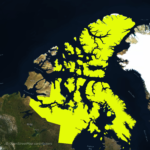This is the city of Nicosia …
It is the largest city, the capital, and seat of the government of Cyprus.
It is also the southeasternmost of all EU member states‘ capitals at a distance; 2901km southwest from Brussels. This is roughly the same distance as to Ethiopia’s capital Addis Ababa which is 2960km south.
There is also a town in Sicily in Southern Italy with the same name. Meaning that the distance between Nicosia and Nicosia is 1,718 km.
As of 2020 the population is roughly around 200’000 people
The people of Cyprus are broadly divided into two main ethnic communities, Greek Cypriots and Turkish Cypriots, who share many cultural traits but maintain distinct identities based on ethnicity, religion, language, and close ties with their respective motherlands.
THough Cyprus as a whole is a rather multi ethnic place with people from all over the world.
Cyprus and Nicosia also happen to have a very rich history.
Indeed, very few places in the world have had such a long continuity of historic background with Helenic people inhabiting the region for 1000’s of years never having been displaced.
The remains of the oldest known pet cat were found buried with its master. Archeologists estimate the remains to be dating back about 9,500 years.
Some of the world’s oldest water wells can also be found, estimated that they have been around for about 10,500 years.
The world’s oldest wine label belongs to Cyprus. “Commandaria” is recognized as the world’s oldest named wine dating back 5000 years.
The oldest and most impressive remnants of Nicosias history would be the Selimiye Mosque Historically known as Cathedral of Saint Sophia.
according to sources, it “may have been the largest church built in the Eastern Mediterranean at the time. Initially It served as a Roman Catholic cathedral and was converted into a mosque in 1570 with the start of Ottoman rule in the region.
Next most impressive remnant of history you can still see would be the Venetian Walls, the construction of which started in 1567 prompted by fears of a possible and eventually realized Ottoman invasion as The Venetians never managed to finish the walls in time.
However what arguably defines Nicosia the most today is the “cease fire zone” running through the middle of the city known as the Green Line.
Where modern shops and restaurants end suddenly with barbed wire.
The course of this line through Nicosia corresponds to the natural path of Pedeios River but the line separates much more than just the city. The line is drawn to divide the whole island of Cyprus.
This in-between zone, a no man’s land slices the city in two dividing it between the Greek Cypriot and the Turkish Cypriot populations. Creating a de facto two state system in
The nation.
Northern part belongs to The Turkish Republic of Northern Cyprus, a state recognized only by Turkey, considered as occupied territory by the international community and officially a part of the Republic of Cyprus.
And south of this border is the Republic of Cyprus with a majority Greek-Cypriot population.
A fascinating example of how the country has been split can be seen at the location of the old Nicosia airport which is now mainly used as the headquarters of the United Nations Peacekeeping Force.
The airport was the scene of some of the heaviest fighting between Cypriot and Turkish forces and so was turned into a part of the demilitarised zone.
To this day Nicosia as a capital has no airport.
a new airport in Larnaca was opened in 1975, while Northern Cyprus established Ercan International Airport in 2004.
But Ercan is not considered by the Government of Cyprus as a legal entry or exit point, thus flights from it go only to Turkey. Just one example of how the island has been split.
Within the EU there is no other urban area that offers as vivid a picture of intercultural conflict and the divide between east and west as in Nicosia.
So how did this happen? Why has this ancient city been split in two? And how has this changed the lives of Nicosias inhabitants?
HISTORY:
The relationship leading up to today arguably started in 1570 when an Ottoman army marched towards Nicosia and laid siege to the city.
The city managed to last 40 days until its fall
The demographics of the country were changed considerably by Ottoman rule. From a predominantly Greek population to Greek majority and Turkish minority population.
For the next 3 centuries Cyprus was under the rule of the Ottomans.
During this time an ethnic distinction was created based on religious and cultural affiliations;
a privileged Muslim minority community distinguished its interests from the traditionally Greek population.
Commercial and social relations between ethnic groups were open and active. During the Ottoman period Nicosia developed distinct ethnic neighborhoods.
Although all could prosper under the Ottoman administration, the system favored Muslims and spread ethnic segregation and as such the Greeks and the Turks rarely lived together in harmony.
It was also during this period that The Greeks of Cyprus were politically consolidated under the Greek Orthodox Church which became their sole authority.
In the aftermath of the Russo-Turkish War (1877–1878) and the Congress of Berlin, Cyprus was leased to the British Empire in 1878 in exchange for guarantees that Britain would use the island as a base to protect the Ottoman Empire against possible Russian aggression.
The island would serve Britain as a key military base to protect its trade routes to India through the Suez Canal.
The Ottomans retained sovereignty over the island but it was placed under British command.
Within the island.
The British tended to view the two Cypriot communities as natural extensions of the island’s two neighboring countries, ethnic rivals in need of a civilizing intermediary.
World War I allowed Britain to consolidate its holdings in the former Ottoman empire as the two nations were on opposite sides of the war.
Therefore Cyprus was formally annexed by Britain in 1914.
Ever since the independence of Greece which came about in the 1830’s the majority of Greek-Cypriots had been calling for what was known as “ENOSIS” – a union with Greece
After World War 2 Britain started going through a period of decolonisation as it could no longer justify holding onto many of its overseas territories. However, when it came to Cyprus, it was too valuable as the Royal Air Force was able to reach three separate continents.
While Greek-speaking Cypriots in favor of Enosis often rioted against the British rule the turkish minority were quite content with it and they were not in favour of Enosis.
Despite pronounced tensions, approximately 37,000 Greek-and Turkish-speaking Cypriot volunteers served in several branches of the British armed forces during World War II, hoping their contributions might earn Cyprus an opportunity for self determination.
Many were encouraged by the wartime British recruitment slogan: “For Greece and Freedom”
In the aftermath of the war, these expectations were not realized.
Seeking to legitimize a permanent presence on the island, the British colonial authorities started pursuing policies in Cyprus that emphasized ethnic divisions, contributing to the growth of interethnic rivalries.
Anti-British sentiment among Greek-speaking Cypriots intensified in 1954, the year the British transferred their Middle Eastern headquarters from Egypt to Cyprus.
Now a major stronghold in the middle eastern defense network for Britain and America, this shift dramatically decreased the likelihood of Cyprus’s union with Greece.
From 1955 onward, Greek and Greek-speaking Cypriot paramilitary activities focused on disrupting the British colonial administration through a campaign of bombings and assassinations.
In May 1955 Eoka a Greek-Cypriot nationalist guerrilla organisation was formed and attacked police stations in Nicosia and Kyrenia, killing fourteen people. The ultimate goal was a union with Greece and the removal of the British presence on the island.
Given the willingness of Eoka to attack civilians pointed to weakening authority of the British colonial government in Cyprus and promised to provoke large-scale interethnic violence.
It is useful to note that until the middle of 1955, violence between Cypriots was minimal; the conflict was predominantly anticolonial in character.
Now Aware of the potentially disruptive impact of enosis and EOKA on the power balance,
Britain offered more vocal support for Turkish claims in order to counterbalance the increasingly radical nationalistic sentiments among Greek-speaking Cypriots.
Gradually, this effort to replace anticolonial violence with inter ethnic violence succeeded: Greek and Turkish Cypriots became progressively sealed off from one another and divided.
the first serious attacks between Turkish- and Greek-speaking Cypriots took place in 1956 after a Turkish-speaking police officer was killed by EOKA resulting in the formation of VOLKAN a paramilitary group operated by Turkish Cypriots.
As the conflict shifted from its anti colonial demeanour to inter ethnic,
British military personnel installed barbed wire fencing and checkpoints in May 1956 to
“prevent clashes between the Turkish and Greek factions”
It was the first series of steps leading to the permanent, physical division of Nicosia.
Known as the Mason-Dixon Line, it was a temporary, semi-official boundary dividing Greek-and Turkish-speaking Cypriots as civil hostilities began and anti-colonial violence continued.
From there on At least five distinct agendas contributed to the overall worsening of the situation in Cyprus:
First : Britain’s efforts to retain its strategic position and avoid wider regional conflict;
2nd: Cyprus’s efforts to get rid of British administration;
3rd: Greece’s efforts to retain cultural and political influence in Cyprus;
4th: Turkey’s efforts to protect its southern border;
5th: US efforts to block the ascendency of the Communist party in Cyprus and preserve access to its surveillance facilities and military installations on the island.
As it happened, the British and US’s goals could be achieved by partitioning Cyprus.
A stronger turkish presence would prevent Communist infiltration and Britain could more easily remain in control over the island with Greek and Turkish Cypriots being distracted fighting each other.
Throughout the summer of 1958, violence between Greek-and Turkish-speaking Cypriots deteriorated the situation.
In early June, riots followed a bomb explosion at the Turkish Press Office in Nicosia and police stations were attacked
And eight Greek-speaking Cypriots were killed near the Turkish village of Geunyeli.
Tensions in and around the capital were high, prompting British military personnel to impose evening curfews and maintain the strict separation along Mason-Dixon lIne
As new plans were made to try to resolve the Cyprus’s issue, fighting between Greek- and Turkish-speaking Cypriots grew in intensity.
In 1959, the first phase of the Cypriot civil conflict officially began.
The military dispute concluded in February 1959 with the signing of the London and Zurich Agreements, after negotiations between Greek, Turkish, and British diplomats.
Eighteen months later a new country formally asserted itself as a member of the United Nations under the leadership of the Greek Orthodox archbishop, Makarios III, first president of the independent Republic of Cyprus.
At this point Nobody really wanted an independent Cyprus. Greek-cypriots supported union with Greece and the Turkish Cypriots supported a partition.
It was a compromise made not in the interest of Cyprus.
As a result
Britain managed to retain two large sovereign military bases maintaining some of its strategic control
and in reality Turkey, Greece and Britain all had major control in the country.
Cyprus was also restricted from forming a union with Greece and it was explicitly prohibited from being partitioned.
Cyprus had really backed into political independence from a position of desperation.
It adopted a somewhat democratic framework for national government without having first achieved national integration.
Instead of redeeming the country, the new Constitution brought on the darkest period of civil strife in the island’s history.
As By late 1963, the constitutional frameworks by which the country was to function had been abandoned in the face of escalating conflict.
Widespread rioting, especially in the mixed suburbs of Nicosia, prompted intervention by the British forces stationed at the sovereign bases.
The most hard lined EOKA members no longer just targeted British forces but they were also gunning for the “undesirable” turkish population.
As in 1955, chaotic conditions and the nature of interethnic violence in late 1963 prompted the British soldiers to erect temporary physical barricades along the Mason-Dixon line.
Soon after,
it became permanent, as the Green Line late in the December of 1963.
Meanwhile a United Nations peacekeeping force arrived in Cyprus on March 1964 at the request of British and Cypriot representatives as the island was on the brink of all out Civil War or worse, a war between Greece and Turkey.
The peace keeper arrival was punctuated with the construction of barbed wire fences, road blocks, trenches, and other fortifications crisscrossing the island, with a special emphasis on the Green Line as it passed through Nicosia.
At the time the possibility of the existence of the Green line for more than fifty years would have been inconceivable as it was only meant to end hostilities temporarily while a long term solution was found.
the formal establishment of the Green Line lowered the intensity and frequency of violence in Nicosia, tensions between Greek-and Turkish-speaking Cypriots somewhat cooled.
By 1968 many could return home after being displaced by violence and the Green Line.
During the 1960, Cyprus as a whole remained populated by a majority of Greek Cypriots and a common misconception is that it was already somewhat divided. This was not the case.
The ratio between Greek and Turkish Cypriots was fairly evenly distributed throughout the island 82%-18% which was only to change later on.
The political atmosphere in the years that followed the establishment of the Green Line was degrading and violence as well as assasination attempts on president Makarios were common.
In 1974 a coup was orchestrated by the Greek government and executed by soldiers of Cyprus National Guard against President Makarios
Where on 15 July they installed a former paramilitary commander Nicos Sampson in his place.
Sampson was a zealous advocate of enosis and was widely assumed to have been responsible for the murder of many Turkish Cypriot civilians during earlier stages of the civil conflict.
It was later also revealed that the CIA was aware of the plot against Makarios but did nothing to stop it as this rather benefited the US agenda seeing as Makarios was perceived to have connections with communism.
The Turkish government was troubled by the sudden progress of events in Nicosia and promptly invoked its concern for the welfare of isolated Turkish Cypriots.
Invoking its responsibilities as one of the three guarantors to the 1960 Constitution and without any intervention coming from Greece or Britain, Turkey decided to apply military force 5 days after the coup.
By 22 July 1974, Operation Attila was launched occupying about 3 percent of the island’s territory.
An emergency meeting was called by the UN Security Council which failed to achieve any meaningful results.
International opinion supported the initial Turkish action insofar as it served to protect the Turkish Cypriots, but condemned the brutality with which it was conducted.
However as the coup government was dissolved shortly after the fighting began there was no excuse for the Turkish army to press on with the invasion.
A couple of weeks later Turkey controlled about 37 percent of the island as it launched Operation Attila II
Hundreds of thousands of Cypriot civilians still living on a potentially hostile side of the Green Line were now compelled to cross it in a final push for a near-perfect ethnic divide of northern and southern sectors of the island.
Before foreign governments could formulate even a basic response to these events, the political landscape in Cyprus had shifted dramatically.
and the world had witnessed an unprecedented military invasion of a neutral country by a NATO member state on behalf of a minority ethnic group.
The Turkish intervention continues to be viewed by advocates as a defensive maneuver on behalf of Turkish-speaking Cypriots, while detractors consider it an illegal act of foreign aggression against a sovereign nation.
The Turkish Cypriots, who had suffered from 1964, felt liberated. While two hundred thousand Greek Cypriots found their land invaded and themselves homeless, living in tents for the whole of the summer of 1974.
As a result, several thousand Greek Cypriots were killed, hundreds disappeared, and about 70 per cent of the island’s productive capacity fell into the hands of the Turkish army.
It cemented the terms of a prolonged political stalemate in Cyprus that has yet to be broken to this day leaving us in this precarious position.
In the politically turbulent years that followed 1974, the non-occupied south had to rebuild itself materially as it had lost most of its productive capacity.
It is theorised that the invasion could have been stopped through the intervention of US forces however they allowed it to commence as they supported the partitioning of the island being more concerned with the cold War and preventing a Communist country from
In 1983 the Turkish Republic of Northern Cyprus was proclaimed as more and more Turkish people were encouraged to settle in the northern part of the island.
Nicosia Today
Very few reliable studies regarding the impact of the partition on Nicosia have been conducted.
While both parties to the conflict have collected statistics regarding the losses of life and property, it is typical for each group to count only the losses incurred in its own ethnic community while ignoring and minimizing the losses resulting from the violence for which they are responsible.
Loss of life among Cypriots, Turkish military personnel and British military personnel since the beginning of civil strife in the mid-1950s has been substantial.
The partition in Nicosia, led to major inefficiencies.
The Green Line had transformed the center of the historic city, its most vibrant and cooperative sector, into a no man’s land to be taken over by vegetation.
Beginning in 1964 and accelerating after 1974, Greek and Turkish authorities in Nicosia were obliged to develop new commercial centers in the southern and northern outskirts of the city.
This duplication of institutions, facilities and services is a defining characteristic of the divided city.
Resulting in hasty and redundant urban development undertaken to accommodate ethnic separation; Nicosia airport mentioned earlier being just one of them.
Interethnic violence was devastating for a Cypriot economy that had relied on industries like tourism and agriculture that are especially sensitive to political instability.
And The internal displacement of a large segment of the workforce only compounded the problem making the Economic decline sharp.
Especially by Turkish Cypriots, whose government was not recognized outside Turkey and was restricted from normal trade relations.
The prospect of increased productivity and higher standards of living is the strongest argument in favour of unification today which is yet to happen.
The Cyprus problem has become a breakpoint issue for EU accession talks with Turkey.
On the one hand, Turkey is not willing to ratify the EU customs’ treaty and open its ports and airports to the Republic of Cyprus, because it does not recognize the Cypriot administration.
On the other hand, it insists that international sanctions against Northern Cyprus be loosened.
Northern Cyprus is still neither a country, nor a federal region, nor a colonial territory, and it is denied existence on any non-Turkish Cypriot map.
It still has no postal code, nor co-ordinates for air or sea traffic, being seen and treated simply as a place occupied by the Turkish Army
As of April 2003 civilians are able to cross from one side to the other.
on either side the checkpoint buildings that permit the travel are covered with posters, graffiti and statements which reflect the two side’s positions on the Cyprus problem.
The physical construction of the checkpoints in the centre of Nicosia is in itself revealing.
The Greek Cypriot checkpoint is built as a small temporary construction, whereas the Turkish Cypriot checkpoint is a large concrete two-storey structure with a banner on top proclaiming
‘TURKISH REPUBLIC OF NORTHERN CYPRUS FOREVER’.
Turkish Cypriots, whose goal is separation, constructed a historical narrative placing emphasis on events of conflict and violence between the two sides, one focusing on Greek Cypriot aggression, especially during the 1960s and often deeper into the past. It is a view that emphasises historic separation between the two.
In this way, future separation is legitimated through the argument that ‘the past proves that the two peoples cannot live together’.
While Greek Cypriots, who desire reunification, have placed emphasis on past events of cooperation, constructing a historical narrative whereby the two ethnic groups are said to have ‘peacefully coexisted’ and also of course on the fact that Republic of Cyprus should have sovereign right over the whole island especially considering the fact that north Cyprus was mostly inhabited by Greek Cypriots until the 1974 invasion.
No resolution has been found and there is worry that Turkish influence is creeping into the country and that if a solution for unification is not found then Northern Cyprus may be fully integrated into Turkish territory.
As Greece and Turkey are currently at an impasse over the rights to the Mediterranean sea the acquisition of Northern Cyprus would greatly bolster Turkey’s claim to Mediterranean waters and its resources.
For obvious reasons this would be a great result for Turkey and this must at least partially explain Turkey encouraging its people to settle in Northern Cyprus shortly after the partition.
Despite the existence of this geopolitical pretext
Nicosia of today is a rather peaceful and thriving capital with high standards of living.
Nicosia is considered one of the safest cities in the world perceived to be about as safe as Amsterdam and significantly safer than Brussels according to numbers from Numbeo.
The sewage system in Nicosia is a famous example of the possibility of working together on joined projects; it was the largest bi-communal cooperation on the island taking place after 1974 meaning that while Nicosia is divided above ground it is joined underground.
For the younger generation of Cypriots the past is becoming less relevant and Hopefully it will not take another 50 years for mutual understanding to resolve the Cyprus problem and Nicosia will be whole once again.



